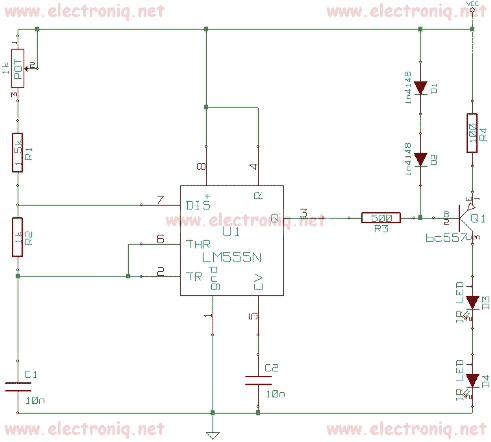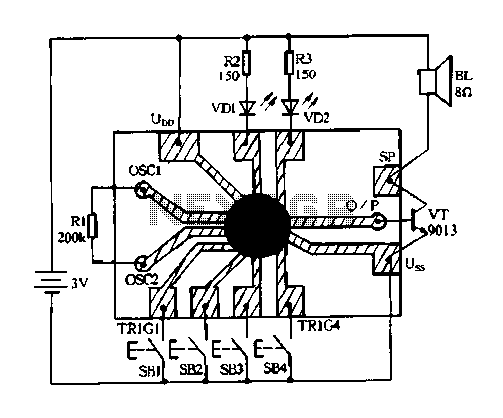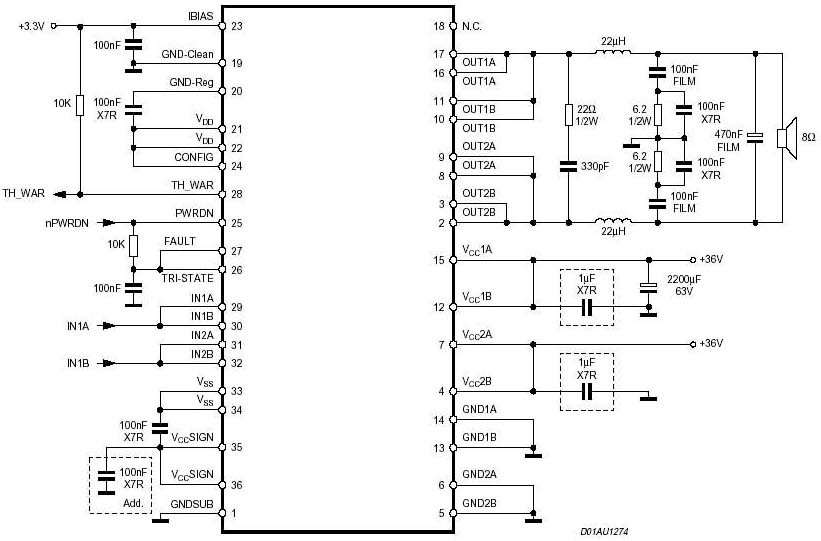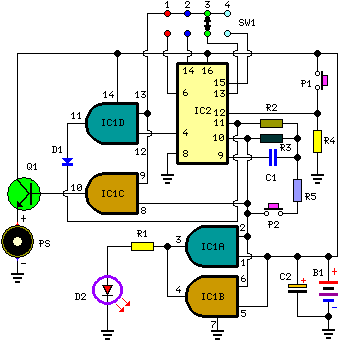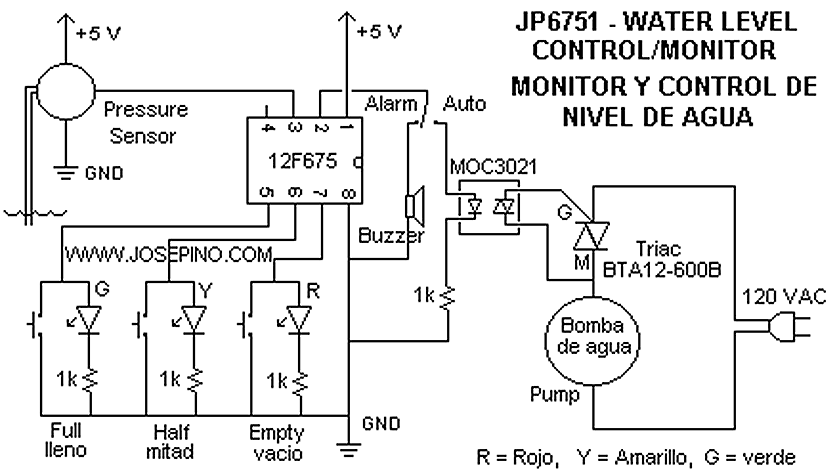
Remote Control Extender Circuit
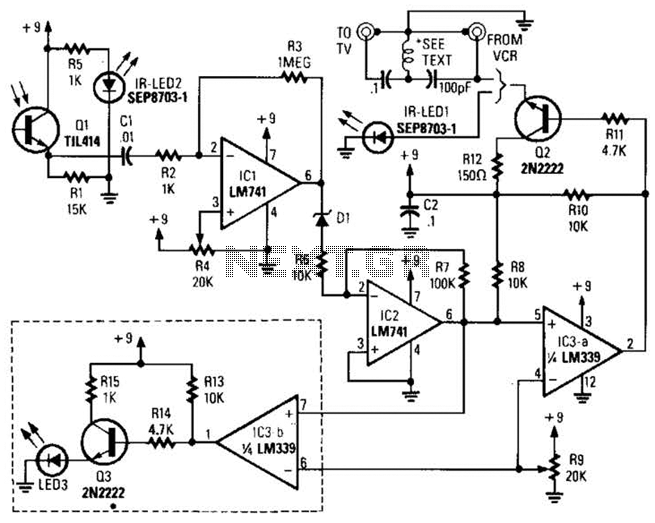
A signal from an infrared (IR) remote control is converted from IR radiation to a frequency pulse that can be transmitted through coaxial TV cable or any other two-conductor wire to another room, where it is converted back into an IR signal.
The described system serves to extend the functionality of an infrared remote control by enabling the control of devices located in a different room. The process begins with the reception of an IR signal from the remote control, which is typically emitted in the form of modulated light pulses. An IR receiver module captures these pulses and converts them into an electrical signal.
This electrical signal is then processed by a microcontroller or a dedicated circuit, which modulates the signal into a frequency pulse suitable for transmission over coaxial or two-conductor wiring. The modulation process involves converting the original signal into a format that can be efficiently transmitted over longer distances without significant loss of quality or integrity.
Once the signal is modulated, it is sent through the coaxial cable or two-conductor wire to the receiving end, which is located in another room. At the receiving end, a demodulator circuit is employed to convert the frequency pulse back into the original electrical signal. This is typically achieved using another microcontroller or a specialized demodulation circuit designed to recognize the modulation scheme used during transmission.
After demodulation, the electrical signal is sent to an IR emitter, which converts the electrical signal back into IR radiation. This IR emitter can be a simple infrared LED that emits light pulses corresponding to the original commands sent from the remote control. The emitted IR signal can then control the intended device, such as a television or audio system, as if the remote control were being used in the same room.
This system effectively bridges the gap between different rooms, allowing for seamless control of electronic devices without the need for direct line-of-sight, which is a common limitation of traditional IR remote control systems. A signal from an IR remote control is converted from IR radiation to a frequency pulse that can be transmitted tlirough coaxial TV cable or any other two-conductor wire to another room, where it`s converted back into an IR signal.
The described system serves to extend the functionality of an infrared remote control by enabling the control of devices located in a different room. The process begins with the reception of an IR signal from the remote control, which is typically emitted in the form of modulated light pulses. An IR receiver module captures these pulses and converts them into an electrical signal.
This electrical signal is then processed by a microcontroller or a dedicated circuit, which modulates the signal into a frequency pulse suitable for transmission over coaxial or two-conductor wiring. The modulation process involves converting the original signal into a format that can be efficiently transmitted over longer distances without significant loss of quality or integrity.
Once the signal is modulated, it is sent through the coaxial cable or two-conductor wire to the receiving end, which is located in another room. At the receiving end, a demodulator circuit is employed to convert the frequency pulse back into the original electrical signal. This is typically achieved using another microcontroller or a specialized demodulation circuit designed to recognize the modulation scheme used during transmission.
After demodulation, the electrical signal is sent to an IR emitter, which converts the electrical signal back into IR radiation. This IR emitter can be a simple infrared LED that emits light pulses corresponding to the original commands sent from the remote control. The emitted IR signal can then control the intended device, such as a television or audio system, as if the remote control were being used in the same room.
This system effectively bridges the gap between different rooms, allowing for seamless control of electronic devices without the need for direct line-of-sight, which is a common limitation of traditional IR remote control systems. A signal from an IR remote control is converted from IR radiation to a frequency pulse that can be transmitted tlirough coaxial TV cable or any other two-conductor wire to another room, where it`s converted back into an IR signal.

